- Home
- C. S. Lewis
Studies in Medieval and Renaissance Literature Page 2
Studies in Medieval and Renaissance Literature Read online
Page 2
The sort of problems that arise when we begin to read medieval poetry in the way I like best may be illustrated from a textual variant in the fourteenth-century Sir Orfeo. Orfeo, after he has lost Dame Heurodis, is wandering in the forest. There he often catches a glimpse of ‘Þe king o fairy wiþ his rout’ hunting. Repeatedly the chase goes past him: and vanishes. It goes past with a sound: and the three MSS describe the sound thus:
A. Wiþ dim cri and bloweing
B. With dunnyng and with blowyng
C. Wyth dynne, cry, and wyth blowyng.
Leaving aside all question as to which is the correct reading, which do we like best? I agree with the poem’s last editor2 that the A reading is ‘certainly more poetical’. But when I ask why it seems so to me, I find, first, that the scales are, for my sensibility, weighted against B and C by the mainly disagreeable associations of din in Modern English. But those considerations are modern; I must try to discount them. And next, I realize where my pleasure in dim comes from. For me this is ‘properly’ (as the grammarians say) a word describing a degree of light; its use to describe a degree of sound is therefore a metonymy. These transferences from one of our senses to another delight my modern taste. But there is some evidence that dim in fourteenth-century English applied to the audible quite as ‘properly’ as to the visible, in which case a metonymy would not have been felt.3 My scales have perhaps been weighted in favour of dim as well as against din. There are indeed other grounds for preferring A. It gives a finer conception and perhaps a more interesting rhythm. But its apparent superiority as mere language probably did not exist in the Middle Ages.
In that passage we might easily have found what was not there. In the following, we might miss what is. Langland thus describes the Incarnation:
Loue is the plonte of pees and most preciouse of vertues;
For heuene holde hit ne myʒte so heuy hit semede,
Til hit hadde on erthe ʒoten hym-selue.
Was neuere lef up-on lynde lyghter ther-after,
As whanne hit hadde of the folde flesch and blod ytake.4
(Piers Plowman, c. II, 149–53)
On any reading, no doubt, the passage is one of most daring intensity. It ascribes weight to the immaterial and painful tension (almost physiological and sexual) to Omnipotence. It makes spirit grow lighter by assuming a load of earth. But the crowning audacity escapes us unless we realize how gay, homely, and thoroughly secular ‘lef up-on lynde’ is. Women are laughingly advised to be as ‘light as leef on linde’ (Clerkes Tale, E 1211). In the Bouge of Court that disgraceful confidence trickster Harvy Hafter comes up to the dreamer ‘leaping light as lynde’ (stanza 33).* And light in Middle English, we must remember, refers at least as ‘properly’ and as often to cheerfulness, frivolity, and nimbleness of movement, as to smallness of weight. Hence the effect is almost as if Langland had said that Love, incarnate, became ‘as merry as a lark’ or ‘as busy as a bee’. (In the next line he will be telling us it was as sharp as a needle.) The real poetry of the phrase depends on its being a good deal less ‘poetical’ (in the graver and more demanding sense) than the uninstructed modern reader would probably take it to be; on its being this, yet uttered with the deepest reverence and gratitude.
The error we might have made in reading the passage from Sir Orfeo was linguistic in a fairly narrow sense. A really good glossary or dictionary would have set us right about dim and din, as about many other words which are misleading precisely because they survive in modern English. (Against, comedy, complexion, constellation, danger, I dare say, feeling, fellow, free, girl, law, religion, sad, and wait, are all notorious pitfalls.) What we might have missed in the passage from Piers Plowman, on the other hand, can be supplied only by a fairly wide reading of medieval English literature; whether our own, or that vicarious reading which is offered to us by the quotations of ‘parallels’ in good commentaries. Those who speak with contempt of editors and their notes often show much ingratitude.
The aim of this work is mainly to prevent, or cure, errors of yet a third kind. They may first be revealed to a teacher by a mistake in his pupil’s translation which is itself merely lexical; but it is symptomatic of a far wider misapprehension. Thus only a careless student will render the line from Pearl ‘Fro spot my spyryt þer sprang in space’ (61) as ‘From that place my spirit sprang in space’. The conscientious man would have found out what in sрace really meant (in a space of time, presently). To be sure, the correction of this error even on the philological level will be most fruitful; the pupil who learns that space usually meant a temporal rather than a local extension and that space as a concrete (the abyss, the vacuity in which all material objects exist) cannot be traced earlier than Milton, will have learned something worth knowing—especially about Milton. But a far greater light dawns upon him when he comes to realize that this modern meaning of space could not have existed in the fourteenth century because the thing meant did not exist for the human mind. The drama of existence was not performed against any such forbidding backcloth. There was no abyss. Man looked up at a patterned, populous, intricate, finite cosmos; a builded thing, not a wilderness; ‘heaven’ or ‘spheres’, not ‘space’. The readjustments he will find himself compelled to make when he has thoroughly grasped this will lead him on to reckon with the presence of that very different conception behind almost every stroke of the medieval chisel, brush or pen.
Later in the same Pearl the poet says that if any man in the body had ‘suffered the favour’, abiden þat bone, which was given him in his vision, then, though all the learned men in the world had him under their care,
His lyf were loste an-vnder mone
(1092)
‘his life were lost beneath the moon’. Similarly Nature, in Chaucer’s Phisiciens Tale, says
ech thing in my cure is
Under the mone, that may wane and waxe.
(C.T. C 22–3)
The modern reader might take ‘under the moon’, like our modern ‘under the sun’, as an entirely vague synonym for everywhere or anywhere, and the whole of Chaucer’s second line for padding. In reality they are of an almost scientific precision. He might misunderstand Dante’s reference to ‘the Love that moves the sun’ (Paradiso, XXXIII, 145). Donne’s ‘So thy love may be my loves spheare’ (Aire and Angels, 25) can be grossly misunderstood. The exact reason why ‘Fortune may non angel dere’ (Monks Tale, C.T. B 3191) or why Hamlet’s lunacy will not be noticed in England (III, i, 168) may escape us. All these possible misinterpretations of single lines, however, are not the most serious danger. They will be corrected, for a careful reader, by the notes. What we really have to fear is a slighter, but more continuous and in the long run more impoverishing, blindness to the full implications of apparently innocent passages. In the language of the old poets it is not the obviously ‘hard’ words that betray us; it is the seemingly easy words which will make sense (but not the sense the poet intended) if we take them in their modern meanings. So in their images. If influence occurs in an explicitly astrological passage we shall not go wrong; but unless we have our whole imagination so impregnated with the old point of view that reference to it has become habitual, we shall almost certainly fail to respond to the metaphorical uses of influence (say, in Milton). In our own language the metaphorical use of this word is the only one, and the metaphor is thoroughly dead. In the older writers it is glitteringly alive. So again, when Chaucer exhorts his young readers to return ‘hoom’ from worldly vanity (Troilus, V, 1837), or when Frank says in The Witch of Edmonton ‘All life is but a wandring to finde home’ (IV, ii, 31),* we may see in this no more than a pious metaphor at all times very natural to a Christian and familiar in the Hymn-Books. But we shall have missed something.
It is on these grounds that I think it worth while to spend some labour on ‘putting ourselves back’ into the universe which our ancestors believed themselves to inhabit. What their work means to us after we have done so appears to me not only more accurate (more like what they inten
ded) but also more interesting and nourishing and delightful. But I have no special wish to make converts. I write for those, whether few or many, who, like me, care to know more of this theatre and this play than can be seen from the particular row and seat of the mid-twentieth century.
Even this, however, does not sufficiently define my endeavours. There are two possible approaches to medieval literature which I shall not adopt, and readers who favour either of them are entitled to ask why. These are the theological and the anthropological.
There are some who see all medieval literature primarily, if not exclusively, as exposition of medieval Christian doctrine. The Middle Ages would have been pleased to be taken in this way, but would have known that the compliment was undeserved. Troilus is for Chaucer something to be repented of. And this approach can become baneful when it leads critics to equate the edificatory value of a work with its value as literature. From the premise (perhaps true) that Piers Plowman is a great sermon, I think, some have wrongly drawn the conclusion that it is a great poem. (That it contains great poetry, no one doubts; that is a distinct proposition.) If I say little about this error it is because I anticipate that most modern readers will be in no danger of excessive leniency to it. If I were addressing only my ‘even-Christians’ I might sing a very different tune.
About the anthropological approach two questions arise, one of fact, and one of relevance. On the question of fact I say nothing. The claims made by Professor Loomis and others for a mythical origin behind many objects, people, and situations in romance—and for a ritual origin behind the mythical—may be true or false. It would be natural to suppose that some were the one and some the other. I may believe that Gawain’s property of growing stronger as the sun ascended5 is causally linked, through many intermediate stages, with a story about a sun-god. I need not also believe that if someone who ‘on a mor lay’, someone ‘sleeping rough’ on a mountain side, is said to have drunk spring water, this has a connexion with well-worship.6 A pint of beer or glass of wine is hard to come by on a mor.
The question of relevance, however, is one I have a view on. When we are discussing the meaning not of books but of single words, we sometimes meet a stupid person who produces an etymology with the air of one settling the whole affair; as if the earliest recorded meaning of the word (or of its remotest ancestor) necessarily threw any light on its meaning in a particular passage a thousand years later. In reality it might or might not. It is an equally gross error to suppose that the ritual or myth from which some ingredient in a romance or poem originated necessarily throws any light on its meaning and function in that romance or poem. Let us for argument’s sake assume that every story in which a father fights his son is causally connected with some myth and ritual of the Eniautos Daimon. Then take four concrete pieces of literature in which such a combat occurs; the Hiltebrantslied,* Henry VI (Pt 3, II, V, 54–93), Sohrab and Rustum, and On Baille’s Strand. What is common to all four is the pathos and irony of the human situation; a thing certainly independent of, perhaps even blunted by, the mythical association. They have no other resemblance. The Hiltebrantslied gives us that irony and pathos and nothing else. Arnold’s poem gives us these, romantically, seen from an almost infinite distance, seen with a double vision at once Homeric and Victorian, blended with his own sad lucidity, filled with the charm of strange, remote places; it is a very complex poem. In Shakespeare the episode serves a crudely didactic purpose: there are the wounds of the civil war, thus stings the Serpent of Division. In Yeats’s play we first get the full mythical excitement. Et pour cause. He is a modern. He is (besides being an Occultist and a spokesman of the Celtic revival), like us, an amateur of myth. But not especially of the Eniautos Daimon. I cannot, for the life of me, see what light the Daimon has cast on any of the four. After I have heard of him they do to me neither more nor less nor other than what they did before. And they do different things. What is common to them is not, from the literary point of view, important. What matters is the differences: the difference between Du bist dir, alter Hun, ummet spaher7 and ‘O pity, God, this miserable age’ and ‘Right for the Polar Star past Orgunje’ and ‘’Twas they that did it, the pale, windy people’. Similarly with Malory’s Gawain. What does it matter whether his peculiar gift has a solar origin or not, when, in this story, the gift itself is utterly unimportant and leads to nothing? It throws not the least light either on the frivolous Gawain (Tennyson’s Gawain) of the earlier books or on the serious Gawain of the later blood-feud. By concentrating on it or its mythical origins you will not increase your enjoyment or understanding of one single sentence in the rest of the prose Morte. The Gawain we actually meet in a book has nothing divine and (but for those two passages) nothing solar about him.
Granted then (if only for purposes of argument) the mythical origins, it is a further question what literary relevance they have, if any, in this or that literary work; a question to be decided, in each case, on its merits. Some feel that such origins have on occasion carried with them into the concrete poem or romance something qualitative, some emotional flavour, which preserves the feeling of the myth, which in its turn preserves the feeling of the ritual. Anthropologists may describe to us what modern savages do; they may conjecture what our ancestors did. But what it all felt like from within, what the ritual meant to those who enacted it, we do not know. None of us have, as believing pagans, participated in a pagan fertility ritual. That old blend of religion, agriculture, sex, drink, tragedy, and buffoonery, cannot be recovered; at any rate, not by external observation. We cannot get inside it; not directly. But if that experience had infused its quality into some other thing which we can get inside, then this other, more penetrable, thing would now be the only medium through which we can get back to the experience itself. Such a ‘more penetrable thing’ might be provided by a work of plastic or literary art which we can still appreciate. If so, our response to the work will in some measure introduce us to the inwardness of the rite. Let us suppose that Bercilak in Gawain and the Green Knight really is derived from Jack in the Green, and Jack from the Eniautos Daimon (both suppositions seem to me quite probable). I have never met a Jack in the Green, still less worshipped the Daimon. I don’t know what it felt like to do so. But I know very well what it is like to meet Bercilak in the poem. His impact is immensely strong; his quality unlike that of anything else. If both our suppositions are correct, then in appreciating Bercilak I may be learning quite a lot about the concrete, qualitative, inward character of the Daimon. In other words the poem is illuminating the myth; the myth is not illuminating the poem. The unknown cannot illuminate the known. What is merely conjectured or reconstructed, or at best known only from without, cannot illumine what we encounter directly and receive deeply into our emotions and imagination. Our knowledge of savage or prehistoric religions is at best only savoir; our knowledge of Bercilak is connaître, knowledge-by-acquaintance. It therefore seems to me that while anthropology might have much to gain from a sensitive reading of the literature, literary criticism can learn almost nothing from anthropology. Anthropology works only with the bones of paganism. In art we meet them reclothed with flesh, alive. (Always, of course, on the assumption that such theories about the origins of Romance are in fact true.)
Yet the anthropological approach is clearly of great value to readers of a particular type. I never fully realized this until I read a certain passage by Mr Speirs; an invaluable passage because it shows plainly why he values anthropology so highly as an aid to literary experience and what, for him, this approach seems to be safeguarding. (That is what I should always wish to know about another man’s theories; people are nearly always fighting for something they, not unjustly, prize.) He has been speaking of a certain marvellous episode in a metrical romance. I abstain from specifying either, so that no one’s attention may be sidetracked by the question whether this episode or this romance would have been his own choice. He suggests for the episode a ritual origin. Then he proceeds:8 ‘But what difference, it may b
e asked, does that make to the poetry? It means that the episode is really more serious than simply a sport of fancy . . . it means that we might have to correct our way of taking these episodes as if they belonged to something of the order of a boy’s adventure story—taking them, that is, too easily.’ He adds that even if the medieval authors knew nothing about the ritual origins ‘they surely inherited with such episodes something of the traditional reverence towards them, a sense of their mystery, a sense too of the mystery of all life’.
Let me emphasize at once my unshakeable agreement with Mr Speirs that what he calls ‘our way of taking these episodes’ needs to be corrected wherever it exists. The reader who sees in all the (let us call them) ‘ferlies’ of medieval romance mere ‘sports of fancy’, who equates them with such vulgar appeals to stupid astonishment as we too often meet in the Arabian Nights, with the half-comic marvels of Italian epic, or with the wholly comic ones of Baron Munchausen,9 the reader who does not respond to them with ‘reverence’ and ‘a sense of their mystery’ and even ‘a sense of the mystery of all life’, utterly misunderstands the best specimens of the genre he is reading.
Once one has understood that Mr Speirs finds in his anthropological bearings a safeguard against this error, one can understand, and sympathize with, the value he puts upon them. Nor do I think he is fighting an imaginary danger. It is true that ‘our way’ of misreading the romances is very recent. In the nineteenth century, even in the Edwardian period, a serious response to the ferlies seems to have been easy and almost universal. Even now it is common among the elderly. Most of my generation have all our lives taken these things with awe and with a sense of their mystery. But a generation has grown up which really needs the corrective that Mr Speirs is offering. For whatever reason—a materialistic philosophy, anti-romanticism, distrust of one’s unconscious—gigantic inhibitions have, with astonishing rapidity, been built up. The response which was once easy and indeed irresistible now needs to be liberated by some sort of mental ascesis. In working out an (anthropological) ascesis which will do this Mr Speirs is performing a useful work. He is ‘digging again the wells that the Philistines have filled’. If the choice, for his generation, lies between reading the romances as frivolous or arbitrary fancy and reading them with constant reference to The Golden Bough, let them by all means take the second alternative.

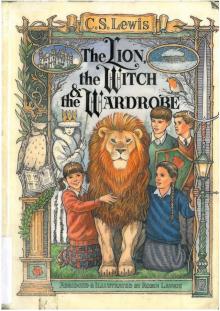 The Lion, the Witch, and the Wardrobe
The Lion, the Witch, and the Wardrobe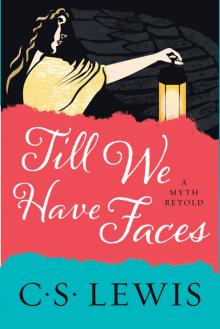 Till We Have Faces
Till We Have Faces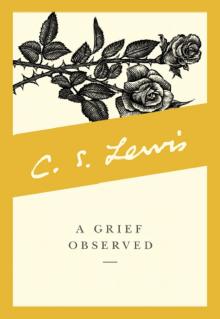 A Grief Observed
A Grief Observed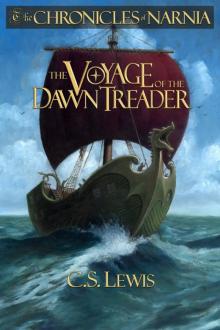 The Voyage of the Dawn Treader
The Voyage of the Dawn Treader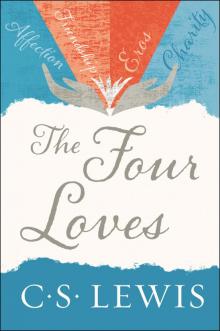 The Four Loves
The Four Loves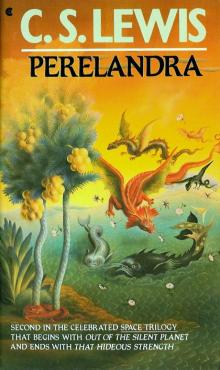 Perelandra
Perelandra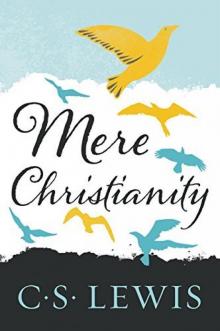 Mere Christianity
Mere Christianity Prince Caspian
Prince Caspian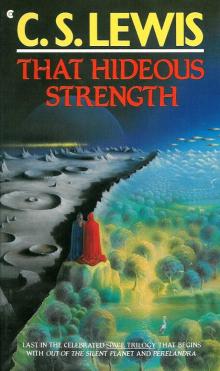 That Hideous Strength
That Hideous Strength The Magicians Nephew
The Magicians Nephew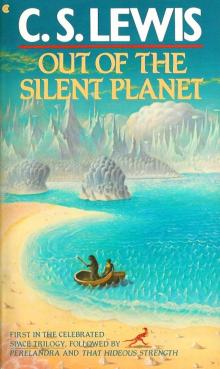 Out of the Silent Planet
Out of the Silent Planet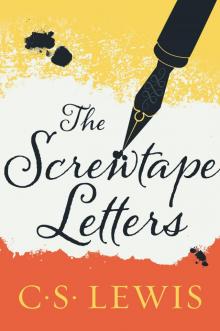 The Screwtape Letters
The Screwtape Letters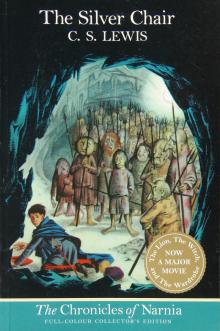 The Silver Chair
The Silver Chair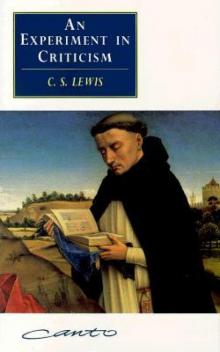 An Experiment in Criticism
An Experiment in Criticism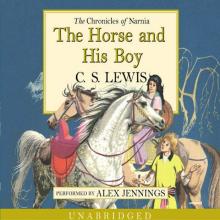 The Horse and His Boy
The Horse and His Boy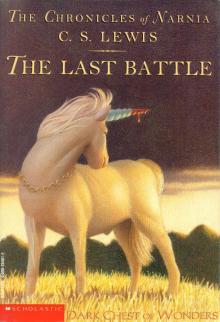 The Last Battle
The Last Battle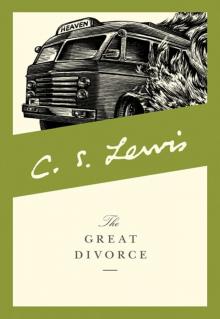 The Great Divorce
The Great Divorce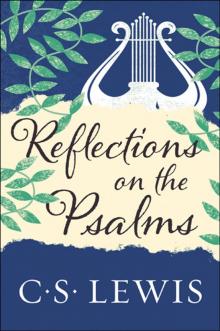 Reflections on the Psalms
Reflections on the Psalms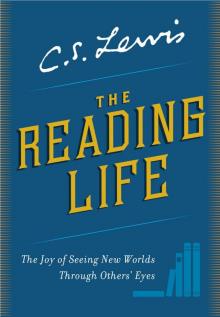 The Reading Life
The Reading Life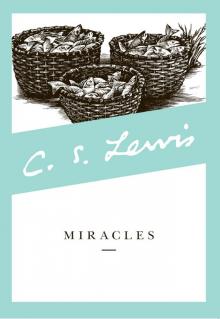 Miracles
Miracles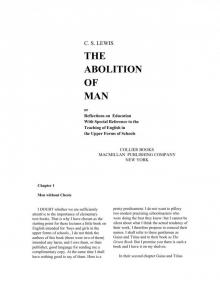 Lewis new
Lewis new Compelling Reason
Compelling Reason Letters of C. S. Lewis
Letters of C. S. Lewis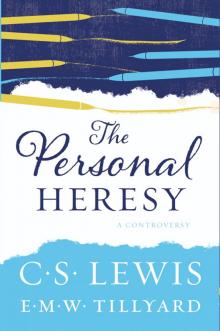 The Personal Heresy
The Personal Heresy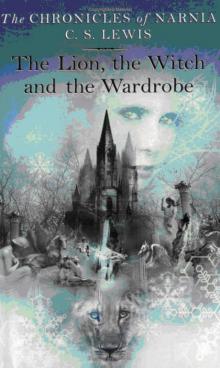 The Lion, The Witch And The Wardrobe
The Lion, The Witch And The Wardrobe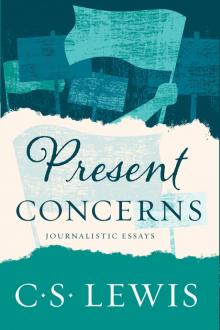 Present Concerns
Present Concerns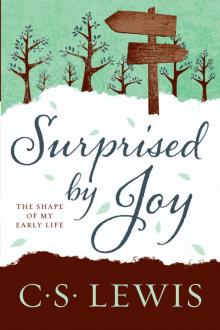 Surprised by Joy
Surprised by Joy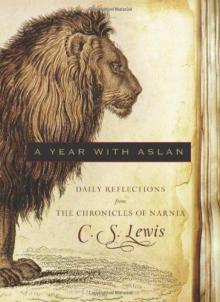 A Year with Aslan: Daily Reflections from The Chronicles of Narnia
A Year with Aslan: Daily Reflections from The Chronicles of Narnia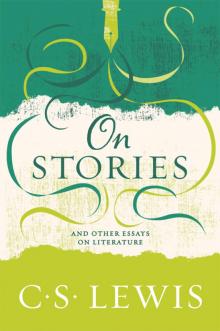 On Stories
On Stories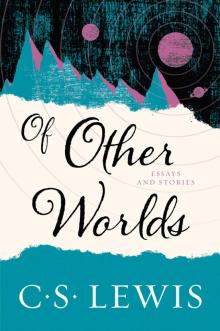 Of Other Worlds
Of Other Worlds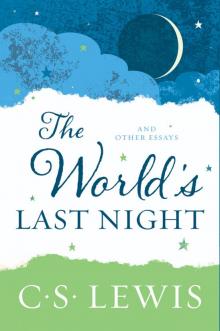 The World's Last Night
The World's Last Night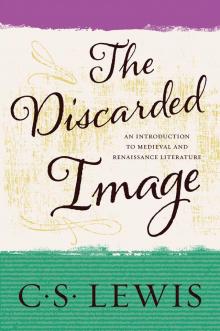 The Discarded Image
The Discarded Image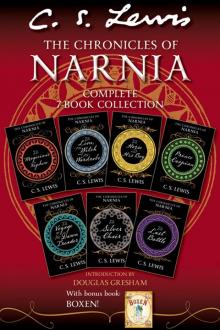 The Chronicles of Narnia Complete 7-Book Collection with Bonus Book
The Chronicles of Narnia Complete 7-Book Collection with Bonus Book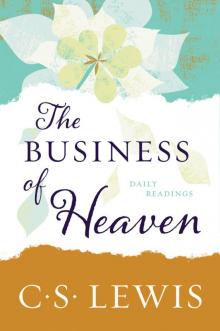 The Business of Heaven
The Business of Heaven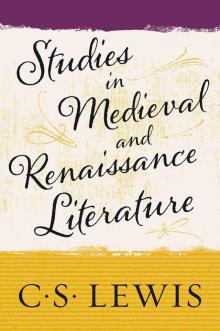 Studies in Medieval and Renaissance Literature
Studies in Medieval and Renaissance Literature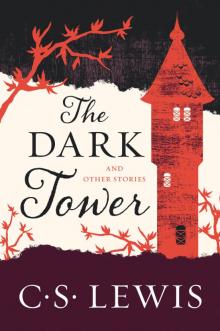 The Dark Tower
The Dark Tower Narrative Poems
Narrative Poems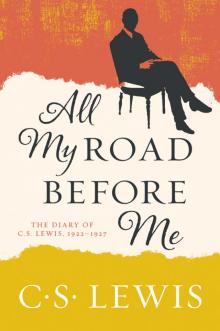 All My Road Before Me
All My Road Before Me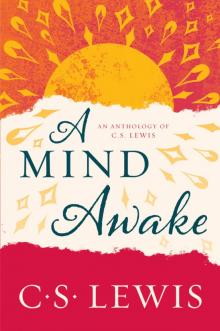 A Mind Awake
A Mind Awake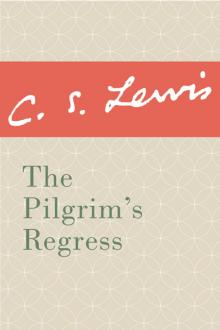 The Pilgrim's Regress
The Pilgrim's Regress